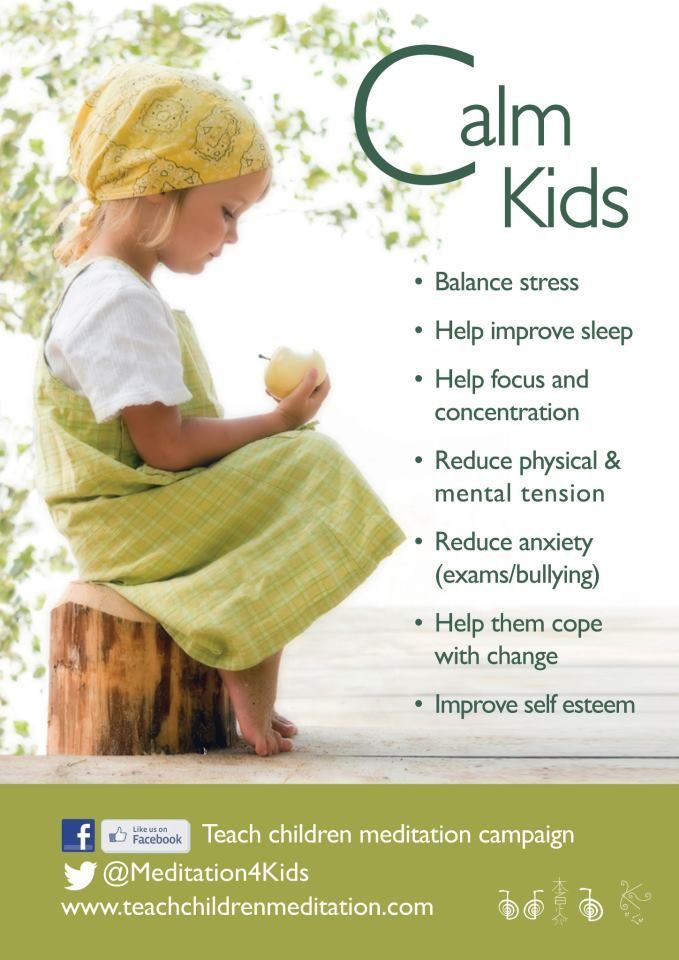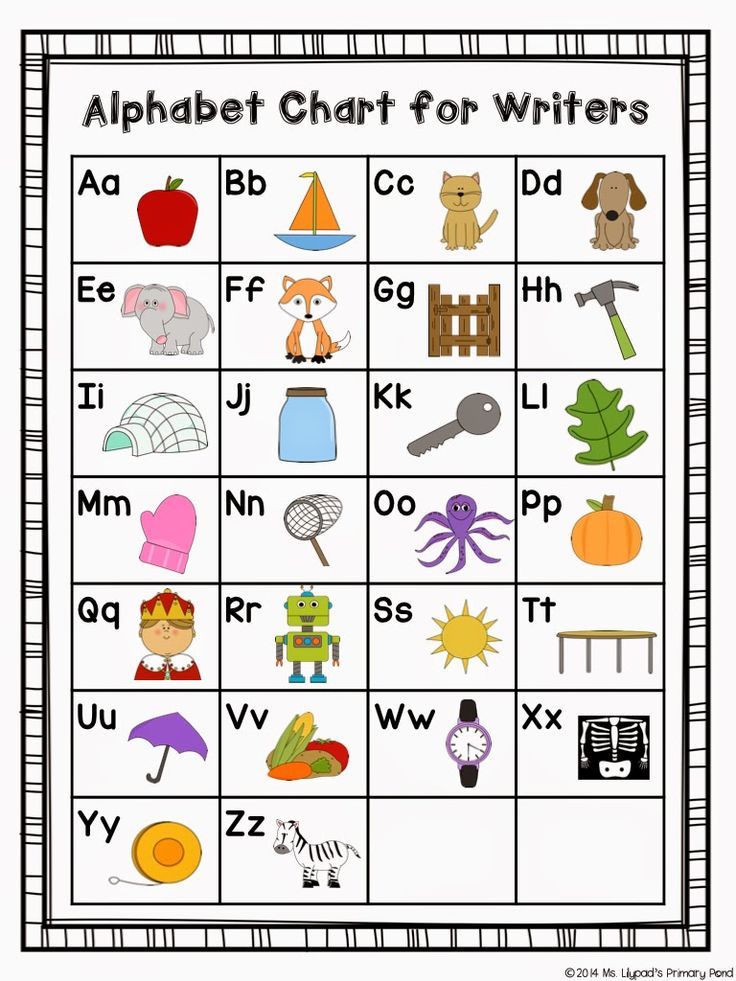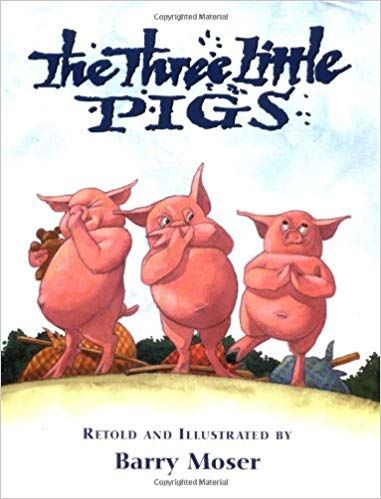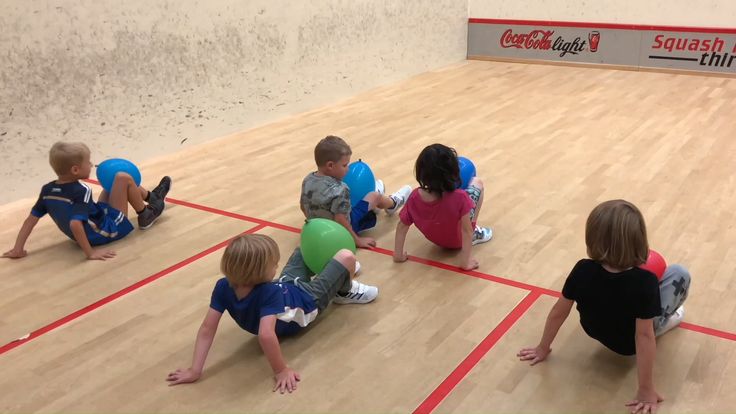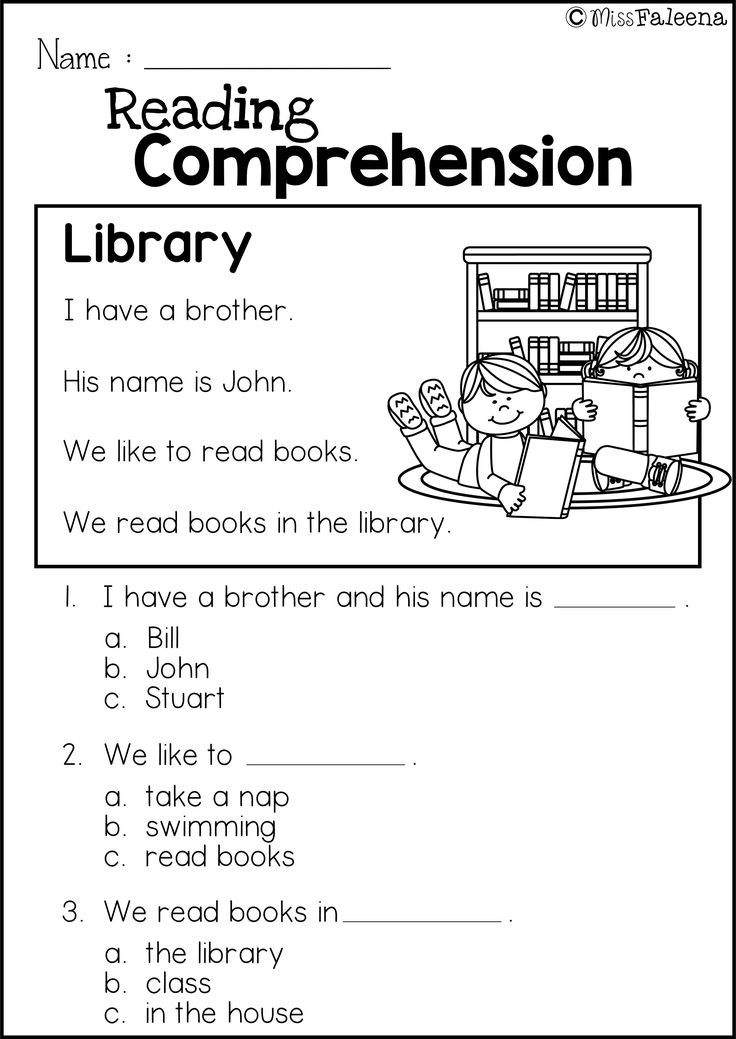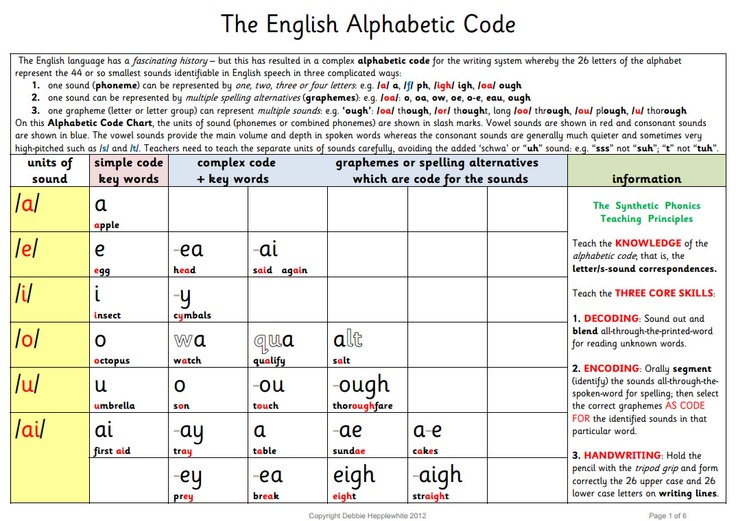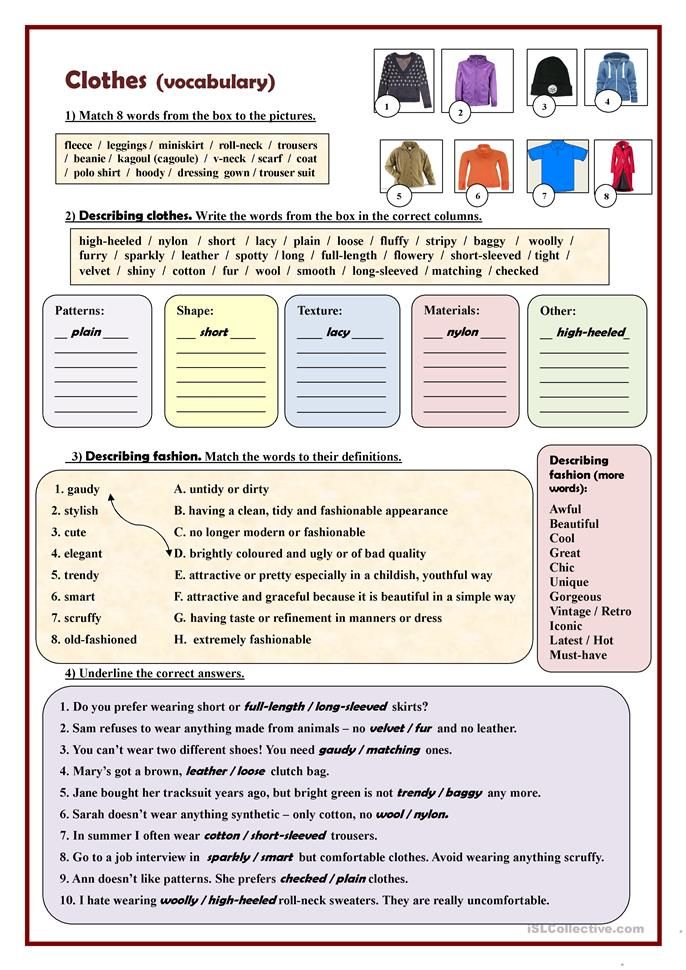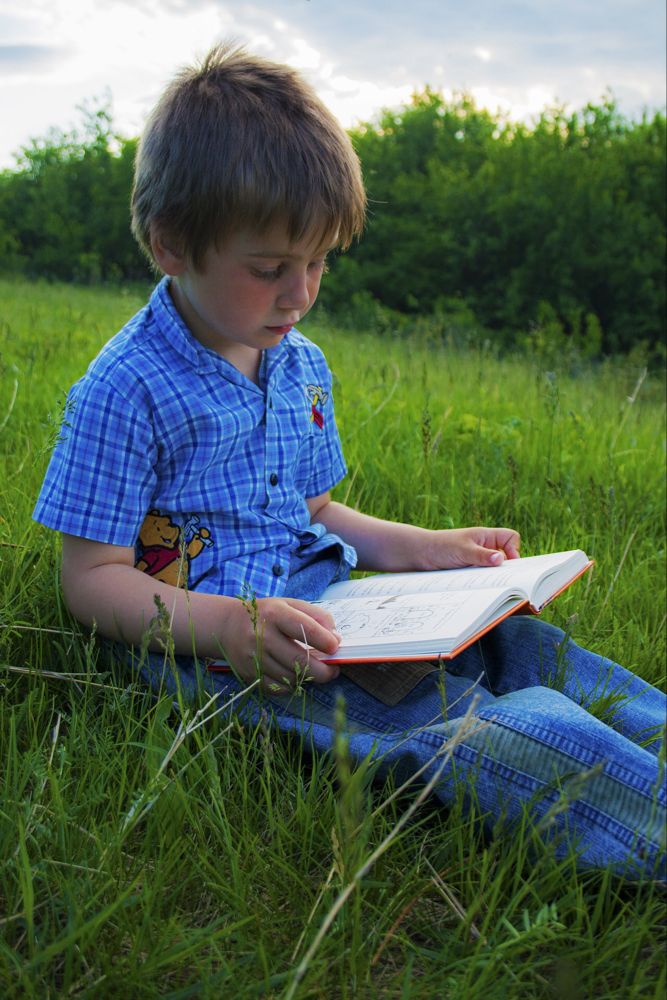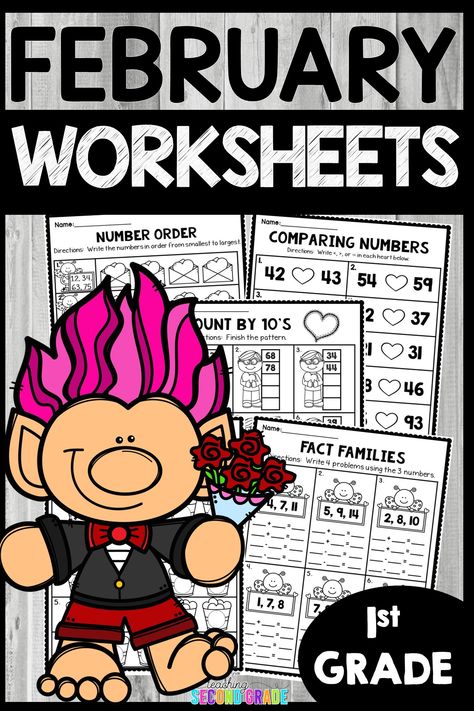Short meditations for kids
Benefits + Free Relaxation Scripts
Guided meditation has so many benefits for kids. Using a meditation script is a relaxing and spacious way to encourage mindfulness with your child. From full body relaxation exercises to fun adventures like a magic carpet ride, your child will reap countless benefits from this special bonding time with you.
Meditation is one of the best mindfulness tools you can equip your child with. It helps kids on a big-picture level when it comes to managing stress and anxiety. And overall mindfulness can head off stress before it turns into a cortisol event (or an all-out tantrum for little ones).
Here we’ll cover the benefits of meditation, why guided meditation is a great starting point for kids, how to get started, and you can get 50+ free guided relaxation scripts to practice with your child.
Table of contents
- What is Guided Meditation?
- The Benefits of Guided Meditation for Kids
- Guided Meditation for Kids
- Links to Sample Meditation Scripts
- How to Use a Guided Meditation Script with Your Child
- Get Started with Your Child
In guided meditation, rather than practicing in silence, one is led by another person’s voice. For instance, a parent can read a guided meditation script to their child before bedtime. Being guided can help the meditator focus, prevent their mind from wandering and offer them an entirely new experience.
Nearly every religion (Christianity, Buddhism, Hinduism, Judaism, Islam, etc.) has a tradition of using meditative practices. Meditation has been used for thousands of years to help relieve stress, anxiety, and the feeling of being out of control or overwhelmed. It also helps improve self-awareness, empathy, and mindfulness.
You don’t need lots of experience—just focusing on your own out-breath from start to finish is a beginning. Feel the sound, the sensation. Trust your intuition for knowing what’s best for your child, and when you practice mediation together, that connection will grow stronger.
Lorraine Murray, author of Calm Kids: Help Children Relax With Mindful Activities
During a meditation session, you may focus on breathing, noticing sensations in your body, relaxing, visualizing, and engaging your senses.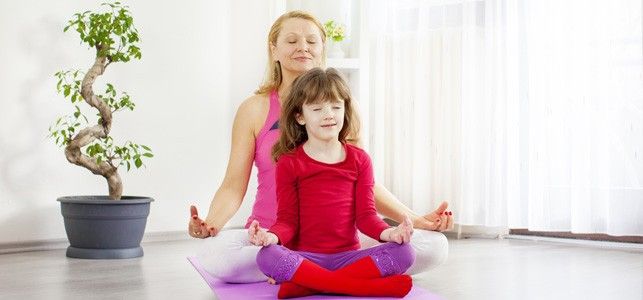 This mind-body practice provides benefits that last far beyond the meditation session.
This mind-body practice provides benefits that last far beyond the meditation session.
The benefits of meditation are numerous – both at home and in the classroom. And good habits early on can lead to a lifetime of well-being. Meditation can
- improve a child’s positive thinking, happiness, and empathy
- help reduce pain and headaches
- improve self esteem
- help children fall asleep faster, and improve sleep quality
- lower cortisol levels, resulting in decreased stress in the body
- help kids focus and concentrate – In a 2019 study, high school students who practiced meditation displayed better attention spans than students who didn’t.
- encourage the use of imagination during guided meditation and help them access their natural creativity both during and after the session
- connect kids with their own emotions as well as the emotions of others, leading to more compassion and a keen sense of emotional intelligence (source)
- improve active listening skills
Some studies have found that kids who are taught to improve their learning or thinking process early on are lifelong better learners and become more resilient.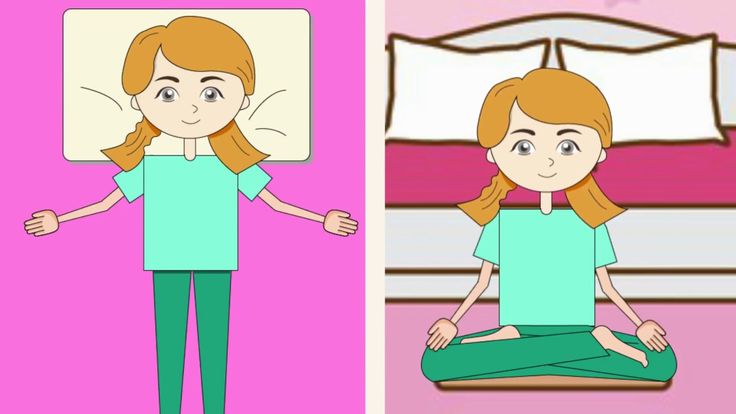
A 2014 JAMA Internal Medicine study reviewed mindfulness studies in relation to psychological stress and well-being. The analysis included 3,500 participants and compared mindfulness-based stress reduction, transcendental mediation, or mantra-based techniques, and tracked participants on a variety of outcomes — like anxiety, depression, and stress scores.
They found these practices moved the needle on anxiety and depressive symptoms to a degree “comparable with what would be expected from the use of an antidepressant in a primary care population.”
While sitting still in lotus pose for more than a few minutes might be challenging for an antsy child, they tend to love guided imagery and stories. They can take center stage in a self-esteem building adventure or relax into a deep breathing exercise.
Guided Meditation for KidsBedtime used to be a battle with our 5-year-old daughter. Since we tried the Lazy River meditation, she’s a completely different kid! Instead of getting hyper or negotiating her nightly routine, she’s calm and seems almost happy to go to bed now.
Marisol R., parent
A July 2021 study found that elementary school kids who practiced mindfulness training slept an average of 74 extra minutes a night.
Our guided meditation scripts for kids have been a much loved part of Green Child for 11 years now. These scripts help kids and teens to improve self-esteem, relieve stress and anxiety, find peace in the present moment, manage anger, and develop an overall positive mental attitude at school and at home.
You can find our ever-growing library of guided meditation and guided imagery scripts for kids all in one place. These calming meditations are written exclusively for Green Child readers by Mellisa Dormoy of Shambala Kids. (They are not available for recording or republishing.)
When you subscribe below, you’ll get full access to the library where you can browse the topics to see which guided meditations will most benefit your child.
Choose a guided imagery script and read it to yourself to find the rhythm before you read it to your child.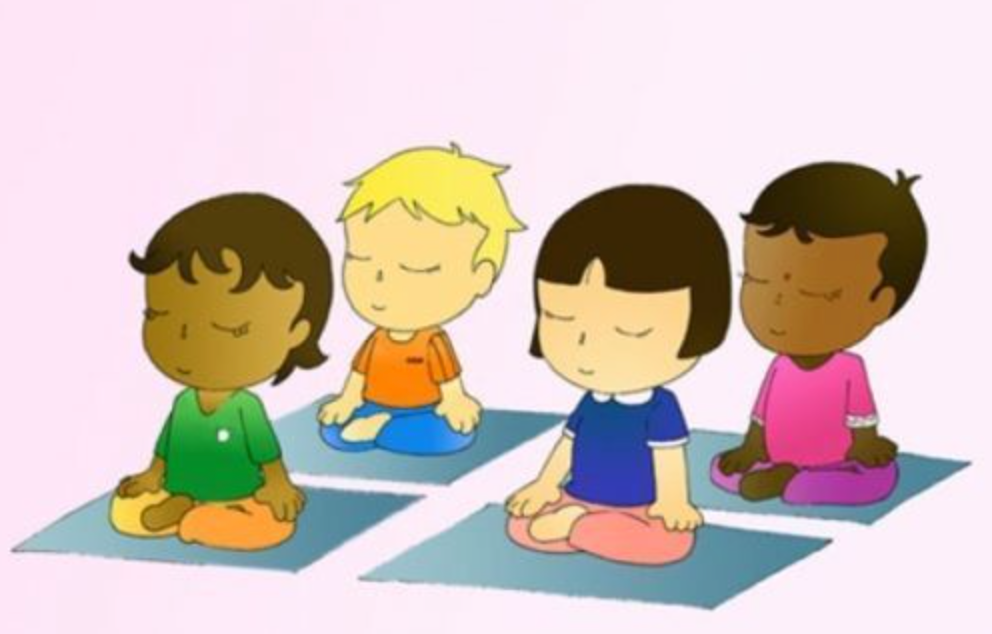 Once you’re ready and your child is relaxed, simply read in a calm voice, pausing to let the words and feelings sink in.
Once you’re ready and your child is relaxed, simply read in a calm voice, pausing to let the words and feelings sink in.
Here you’ll find some examples of the different types of relaxation scripts you can choose from when you have access to the full library of 40+ scripts. (These links are to scripts that appear on our website. When you have the library (or guided meditation central, as some of our readers lovingly call it, you can print or read from your device with no ad breaks.)
Watch how your child relaxes and engages their imagination while they enjoy these calming scenes. The more often you read a relaxation script, the more easily your child will relax and concentrate.
How to Use a Guided Meditation Script with Your ChildMeditation works as a stress management tool by switching off the fight or flight response to stress and allowing the body to switch on the relaxation response. When children meditate, they become less reactive to stress.
Dr. Alina Olteanu
Many parents use these scripts at bedtime to help their child fall asleep peacefully.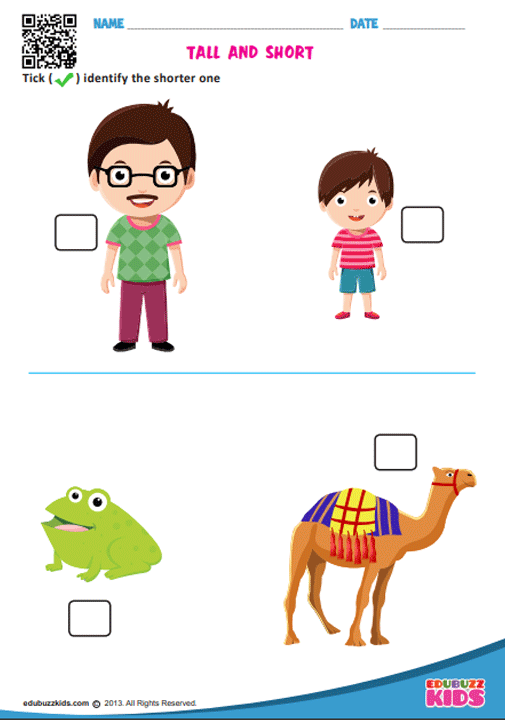 We always get a few emails saying, “My kid was asleep before we even finished the breathing part!”
We always get a few emails saying, “My kid was asleep before we even finished the breathing part!”
Other scripts are more suited to morning readings to help them start their day off calmly and confidently. As you browse through the library, you’ll get an idea of which ones are best for your child. Then…
- Choose a script. Read it to yourself first to find the rhythm.
- Make sure your child is comfortable, relaxed, and calm.
- Choose a time when you have your child’s attention and they are open to a new experience.
- Find a place free from distractions or loud noises.
- Read the script to your child in a calm, soothing voice, pausing often. Notice how your child relaxes and engages.
- If your child is still awake when you’ve finished, allow them to reflect and share their thoughts with you.
Children should not be forced to meditate, and if it seems your child isn’t in the right place to meditate at that time, you can move on to another activity and try again later, or on another day.
You may choose to begin with shorter meditation sessions and increase as their ability to focus and meditate grows.
Get Started with Your ChildKids need the adults around them to behave in ways they can model, says Murray. Kids also need to hear and feel that their adults know them well enough to adapt meditation to their needs and preferences, which can change day to day.
Lorraine Murray, author of Calm Kids: Help Children Relax With Mindful Activities
When can kids start meditating? Our own experience has shown that even toddlers can follow along a relaxing story or at least snuggle up and fall asleep to the sound of mom or dad reading a guided imagery script.
More formal studies show the magic age to be around four years old. By that time children are more aware of their own thought processes.
“It’s almost as though meditation was designed for kids,” says Headspace co-founder and former Buddhist monk Andy Puddicombe.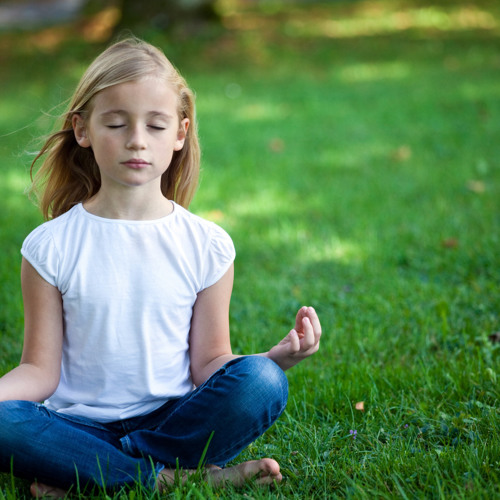 “They just ‘get it’ – there is this elasticity and freedom in their minds which allows them to be present in the moment and free from any external thoughts or pressures. By introducing meditation and mindfulness at an early age, not only can we build on this and help nurture their mind development, but we are also making meditation simple and accessible.”
“They just ‘get it’ – there is this elasticity and freedom in their minds which allows them to be present in the moment and free from any external thoughts or pressures. By introducing meditation and mindfulness at an early age, not only can we build on this and help nurture their mind development, but we are also making meditation simple and accessible.”
You know your child better than anyone. You can always try and if they aren’t receptive, let it go for now and try again in a few months.
Green Child Magazine’s guided relaxation scripts for kids are a great place to begin with your child. Parents praise them for helping calm and center their little ones, and some report that reading a meditation is the best way to get their child to fall asleep at night.
Teachers and therapist often share how these scripts have positively impacted their students and patients.
I am a therapist and needed to help a child suffering, and to do so quickly. I was able to pull up Peaceful Retreat.
Katherine W., Therapist & Social WorkerThis precious boy had been suffering with a terrible weight, unable to focus on school, unable to sleep, he stated he was starting to ‘feel crazy’. His distress was big and painful. We used the meditation, and when he opened his eyes, he stretched, looked around, then looked me in the eye and said, ‘I feel so much better.’ His shoulders loosened and his facial muscles relaxed. To be able to pull that up free of charge, right from the web…it saved him and his family from hospitalization.
Mindful meditation can give children the tools they need to recognize their own signals of stress and bring themselves back into balance. Children are curious and willing to try new things. Meditating with a wiggly pre-schooler may not look exactly as you envision, but your child will benefit, as will you!
This article was originally published in 2017 and was updated in Oct 2022.
Related Articles
Mindfulness Exercises to Help Kids Sleep
Want Happier, Calmer Kids? Simplify Their World
Why Your Child Might Benefit from a Montessori Floor Bed
Create a Calm Bedroom for Your Child with Feng Shui
How to Choose an Organic Mattress
Kids Who Spend More Time in Nature Become More Mentally-Sound Adults
- Author
- Recent Posts
Green Child Magazine
Since 2010, Green Child has published an award-winning publication devoted to natural parenting and conscious living.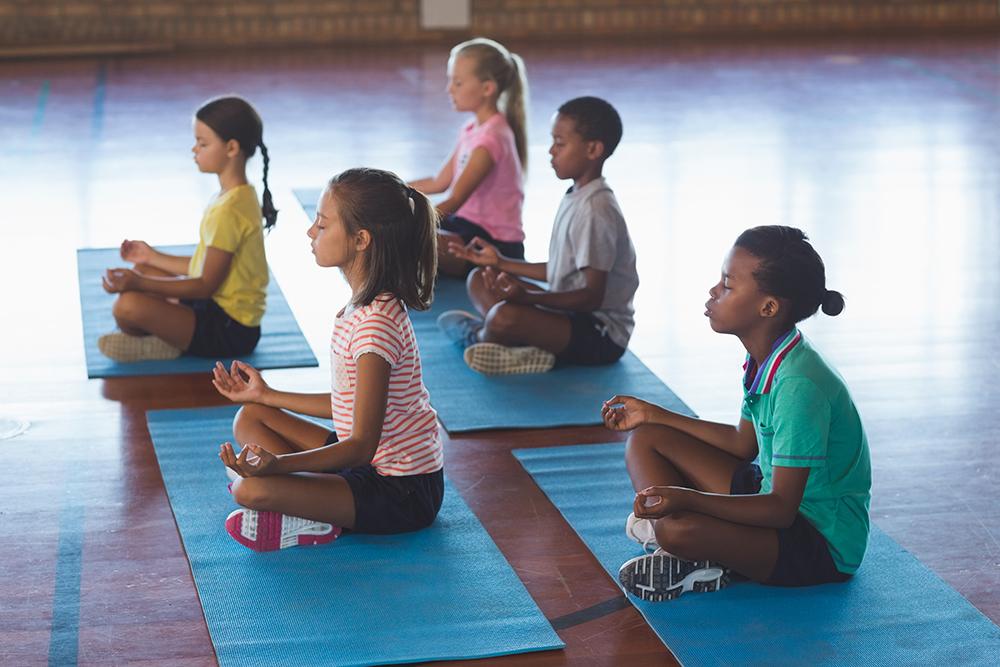 Noted as “good for a green mama’s soul,” Green Child has grown into a resource valued by parents who care about bringing simplicity, compassion, social responsibility, and instinctual intelligence back to parenting.
Noted as “good for a green mama’s soul,” Green Child has grown into a resource valued by parents who care about bringing simplicity, compassion, social responsibility, and instinctual intelligence back to parenting.
Latest posts by Green Child Magazine (see all)
Meditation Scripts for Kids | Mindfulness Exercises
7 Meditation Scripts for Kids
Mindfulness and meditation are not important practices for adults alone. The modern world is a stressful place for many, regardless of age. As a result, kids are feeling the weight of the world in great numbers. Children are therefore one important subgroup of our human population that can benefit from these powerful practices.
Meditation scripts for kids are one simple and impactful way of introducing the concept of meditation to youth. From visualization scripts to mindfulness body scan scripts, there exists a variety of meditation techniques we can introduce our children to.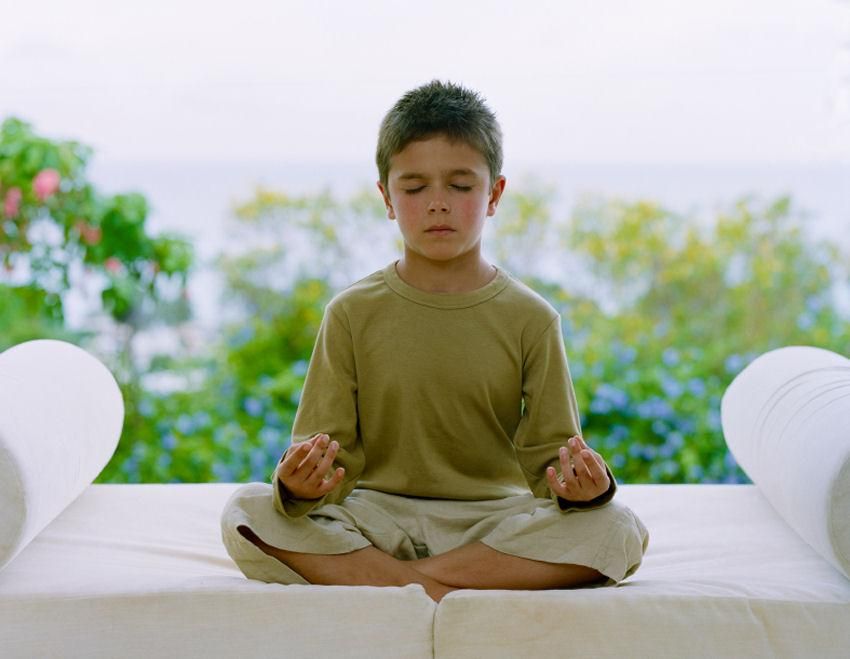
In this guide, we’ll explore the power and practice of using meditation scripts for kids. We’ll also highlight 7 meditation scripts that can serve as a tool for you to begin this work with children. In summary, we’ll cover:
- Benefits of Meditation for Kids
- Introducing Kids to Mindfulness and Meditation
- Reading Meditation Scripts to Kids
- 7 Meditation Scripts for Kids
Just as for adults, there are many potential benefits of meditation for kids. Firstly, meditation and mindfulness practice can help a child to shift their relationship to themselves and to the world around them. This sets the stage for infinite healthy habits to take root. From speaking more mindfully to setting healthy boundaries, meditation helps children prepare for the experiences that come their way.
These healthy habits will manifest in different ways depending on the child. For example, some of the ways that meditation can be of benefit to kids include:
- Improving stress management skills
- Facilitating emotional regulation
- Improving self-awareness
- Enhancing empathy
- Improving communication
- Reducing feelings associated with anxiety
- Heightening one’s sense of gratitude
- Boosting mental health
- Improving focus and attention
There are no limits as to how meditation practice can help our children. As meditation greatly improves our sense of self-awareness, it empowers us to engage in the world in meaningful ways.
Many children are now also experiencing feelings of anxiety and depression. And while the healing journey for these experiences is always multi-faceted, meditation and mindfulness exercises can help children to reconnect with their stable, confident, and joyful center. Meditation scripts for kids are a gateway into these practices.
Introducing Kids to Mindfulness and MeditationThe way we introduce children to mindfulness and meditation will depend upon the child and the setting. Kids might explore mindfulness in the comfort of their own home with parents or caregivers. On the other hand, they might be introduced to these practices by educators or other professionals. If you’re working in schools, meditation scripts for students can enhance focus, concentration, and communication. Ultimately, it doesn’t matter where kids gain these skills from; what is important is that they deepen their personal practice overtime.
There are a few key points to remember when beginning this work with children. Bear in mind:
1. The teachings you lead should be age-appropriate and relatable.Firstly, ensure that the practices you choose to lead are appropriate to the cognition level of the child. While we might take certain words to be second-nature, the same words might pose confusion for kids. For example, for young children, you might opt for nature visualization scripts over those that delve into stress, anxiety, or self-compassion. Ensure that the topics covered are relatable for those listening.
2. Maintain realistic expectations for the child or children you’re working with.You might also want to examine your own expectations for each practice. What can we reasonably hope for the child to experience? Where can we push for deeper inquiry and where is it best that we leave it? Allow the child to have his or her own experience. Practice openness and curiosity regardless of what arises.
Practice openness and curiosity regardless of what arises.
It is also important to remember that there is no need to rush these offerings. In fact, it might be wise to start with very simple exercises that can build overtime. For example, help the child to become accustomed to simple breathing exercises first. Once they are comfortable with this, branch out and broaden the types of scripts you explore together.
4. Spark mindful conversations before formal practice.If meditation and mindfulness are completely new to the child, spark mindful dialogue before formal practice. Share your own experience and thoughts to build openness and curiosity. Examples of talking points you might initiate include:
- “When I feel sad, I’ve noticed I also experience a tightness in my chest.
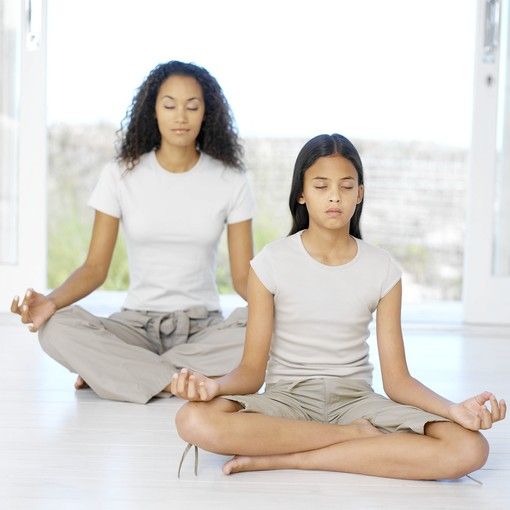 Have you noticed where sadness lives in your body?”
Have you noticed where sadness lives in your body?” - “I’m very grateful for this lovely dinner we’ve cooked together. Would you like to share a silent moment to give thanks for this abundance?”
- “When I’m worried about something, I often try breathing into my belly. I’ve noticed it soothes me. What do you do when you feel worried or scared?”
These conversations will vary according to age and maturity level. Use your instinct to guide you.
5. Ask questions after practice.Lastly, ask your child about his or her experience after the meditation is complete. What did they like about the meditation? What was difficult for them? Did they notice anything interesting happening in their mind or body? Remember to stay entirely open and accepting of their experience
Reading Meditation Scripts for KidsIn addition to the considerations above, the setting and style of each reading matters too.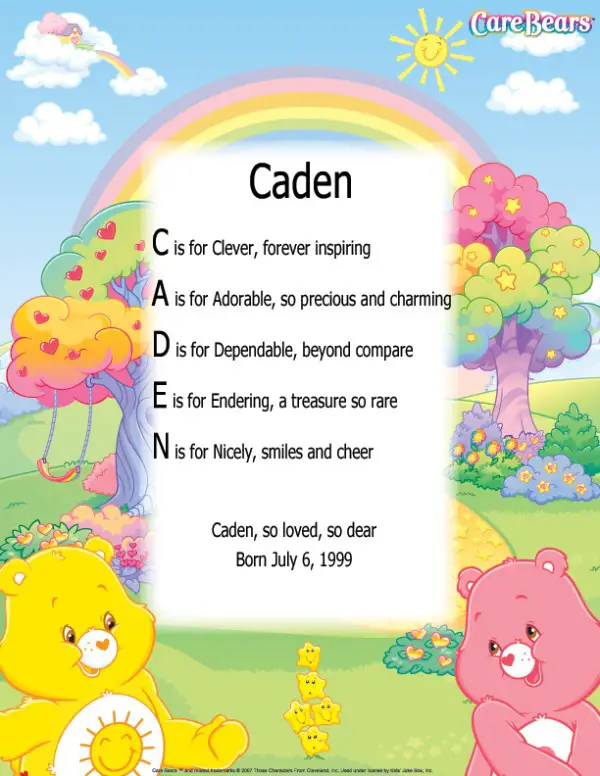 First of all, the setting should feel safe and comfortable for each child to relax into. Whether the reading is occurring at home, at school, or elsewhere, a calm, peaceful environment goes a long way. Consider the following:
First of all, the setting should feel safe and comfortable for each child to relax into. Whether the reading is occurring at home, at school, or elsewhere, a calm, peaceful environment goes a long way. Consider the following:
Is it more appropriate (given the setting and desired outcome) for children to be seated or lying down? For longer meditations, you might have them lay down. Alternatively, you might welcome a seated position to begin before transitioning into a full resting pose.
2. Lights and soundDim lights can help to set the tone for the reading. Music and sound also play a large role in creating the right vibe. Therefore, you’ll want to consider ways of reducing distracting noises and potentially incorporating soothing music. Silence is also welcome. Simply follow your gut to determine what is best for the group or child you are working with.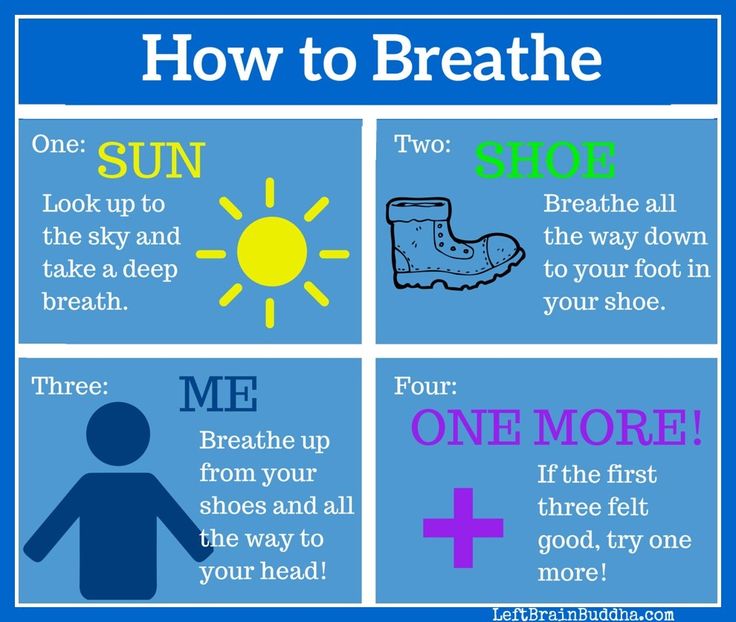
Consider the maturity level and attention span of those you’re working with. Shorter scripts are a safe place to start until you gain a sense of what the child or group is ready for. Furthermore, you’ll want to consider how much is packed into each minute. Is there enough space for them to rest and incorporate what they’ve heard?
4. Tone and paceLastly, be mindful of the tone and pace you use when reading the meditation script. Embody a calm confidence to help the child or children feel safe to relax into the space. Read slowly but steadily while also ensuring the pace is quick enough for them to stay engaged.
5. FlexibilityBe open to the fact that things might not go as planned.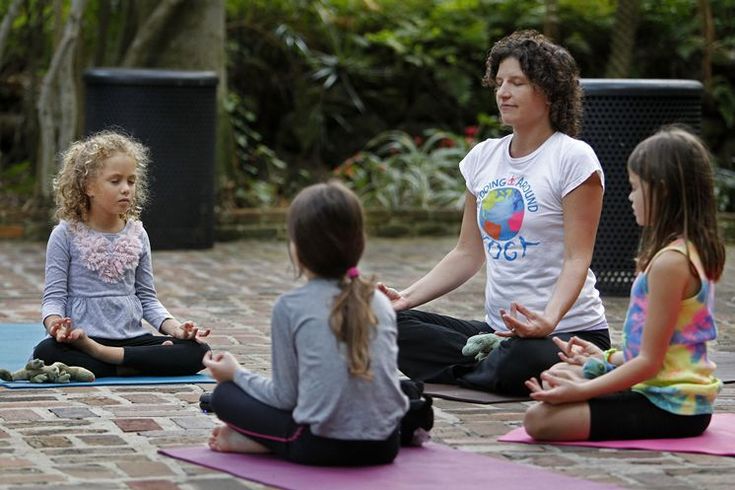 If the child or group starts fidgeting more than usual, how might you respond? If heavy emotions arise during the process, how will you manage these? Children (like adults) can be unpredictable. Ground yourself confidently and compassionately before practice, being open to whatever arises.
If the child or group starts fidgeting more than usual, how might you respond? If heavy emotions arise during the process, how will you manage these? Children (like adults) can be unpredictable. Ground yourself confidently and compassionately before practice, being open to whatever arises.
There are numerous free meditation scripts and mindfulness exercises for kids available for you to explore. To list a few, these 7 meditation scripts for kids might act as a starting point. Allow your instinct to guide you to the right script for the kids you are inspiring.
1. Focusing on the Colors You SeeThis simple though effective mindfulness script is an exercise that can be practiced by kids of all ages. By inviting children to pay greater attention to the colors they see, we enhance their ability to mindfully observe the world around them.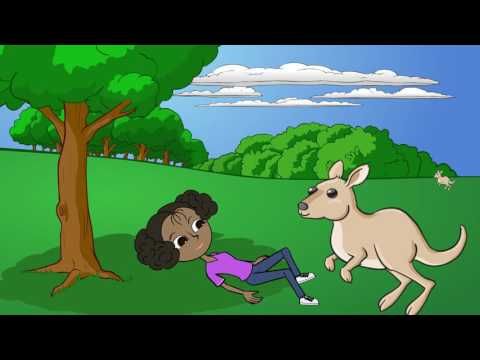 This is a simple mindfulness script for kids that can be explored as an introductory practice.
This is a simple mindfulness script for kids that can be explored as an introductory practice.
Mindfulness visualization scripts are great tools for introducing children to meditation. To illustrate, this script explores the idea of creating healthy boundaries and nourishing oneself through a garden visualization. This may be more beneficial for older children, though it can be practiced with younger kids too.
3. Mindful of Your Food and EatingAnother important topic we can mindfully explore with our children is food. This script, for example, encourages heightened awareness of one’s experience during a simple bite. Since we don’t often eat in this slow and mindful way, this practice is a powerful application of mindfulness that will spark some interesting conversations around the table.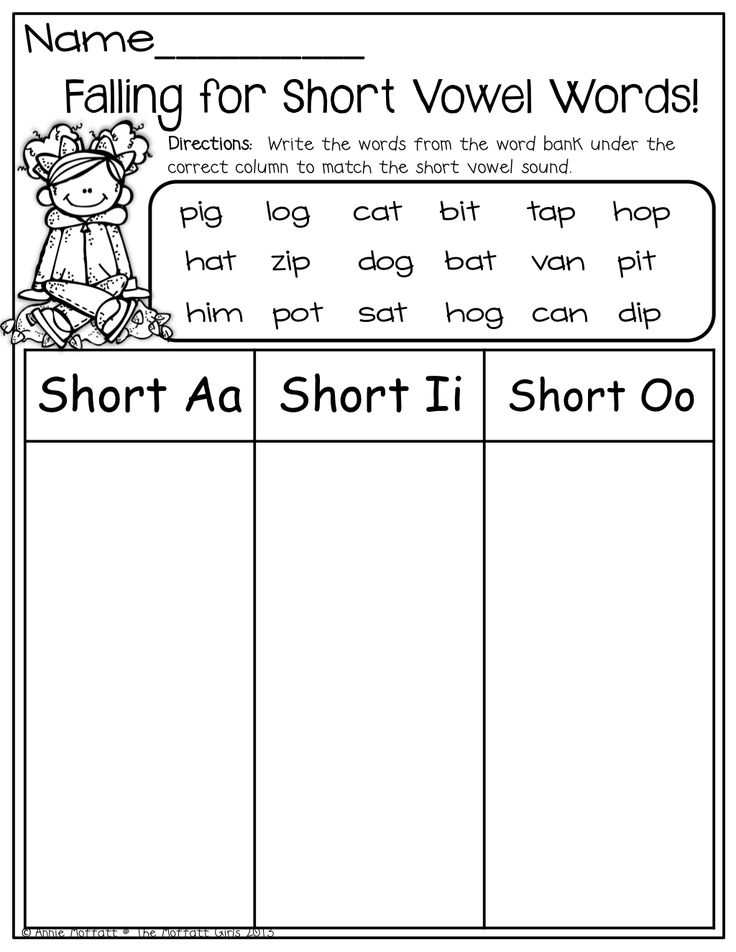
This is a longer meditation that is ideal for those with a slightly greater attention span than most. To facilitate focus, it can also be listened to while lying down. In any case, this meditation draws listeners into a quiet place within. As a result, it is a powerful practice for reminding kids that peace lives within them.
5. Short Body ScanThis mindfulness body scan script is a great exercise to reconnect children with their physical being. By heightening awareness in this way, we promote a deepening of self-awareness, inner peace, and calmness.
6. Sleepy TrainThis meditation script for kids takes listeners on a beautiful visual journey to promote deep relaxation.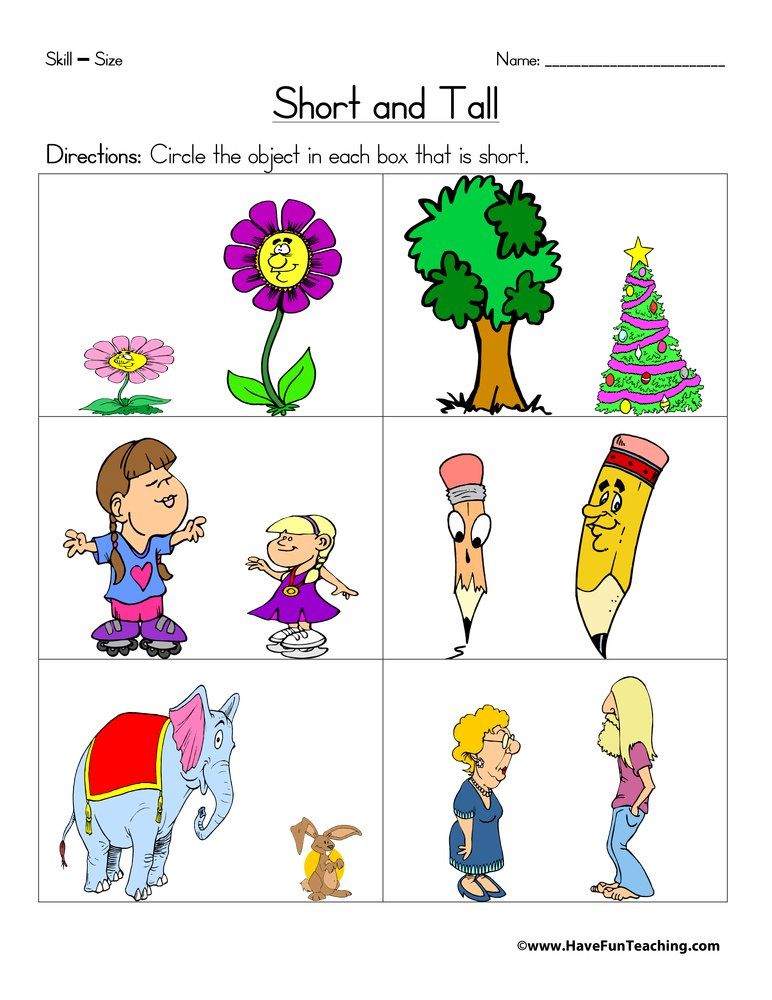 For children that struggle with stress or anxiety, this script might help to encourage a settling of the mind before sleep. Read it aloud with a calm and quiet tone to soothe your little ones before bed.
For children that struggle with stress or anxiety, this script might help to encourage a settling of the mind before sleep. Read it aloud with a calm and quiet tone to soothe your little ones before bed.
Lastly, if your kids are on the verge of their teenage years, this mindfulness meditation for teenagers might be considered for exploration. As it delves into more mature topics such as worth, confidence, and self-compassion, it is ideal for those aged 13 to 19.
Above all, the right meditation scripts for you and your kids are the ones that work. You might also choose to adapt some of these scripts, making them more suitable for the needs of the kids you’re working with. As you explore the world of mindfulness and meditation with these younger humans, remember that learning is a journey. Enjoy the ride as you inspire them to think, live, and breath more mindfully.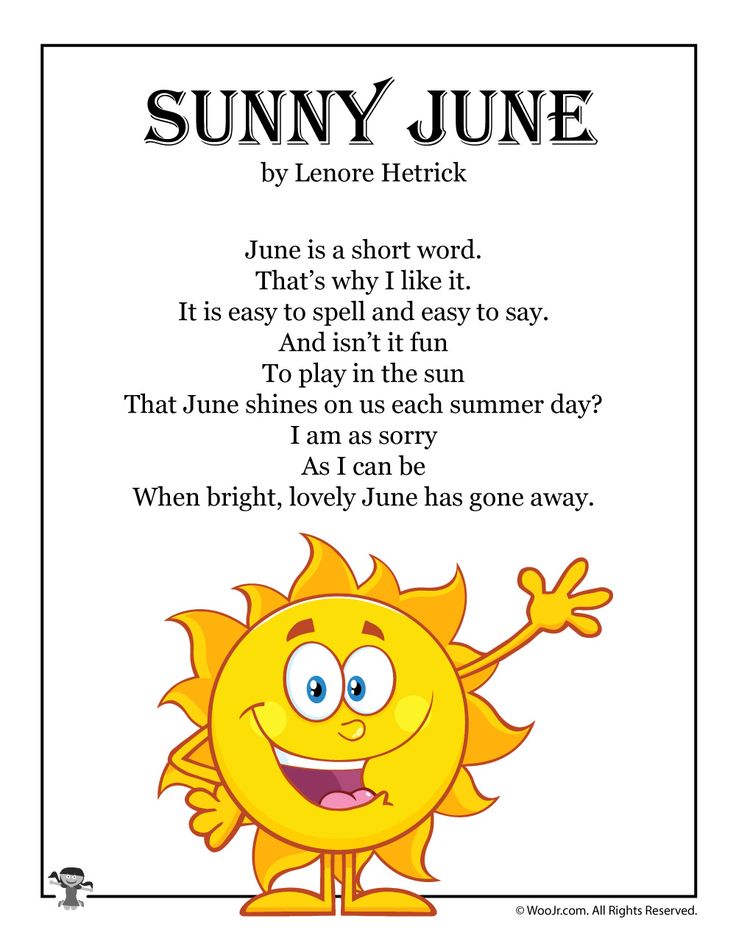
A Parent's Guide to Helping Their Children
Today's youth experience anxiety and stress. Much more than it should. According to recent statistics published by the American Academy of Pediatrics,
Up to 30 percent of children and young adults will experience an anxiety disorder in their lifetime.
Parents and other caregivers should teach our children good stress-reducing habits and introduce them to mindfulness activities that help them grow, support mental health, develop self-control and self-esteem, and reduce anxiety.
One of the best ways to do this is through meditation. We cover everything you need to know about meditation for kids, including what the practice looks like, how to teach it, and why it works. While teaching mindfulness to children may seem like a daunting task for parents or teachers who want to improve the well-being of their children, once you understand what mindfulness and meditation practice is, everything becomes much easier.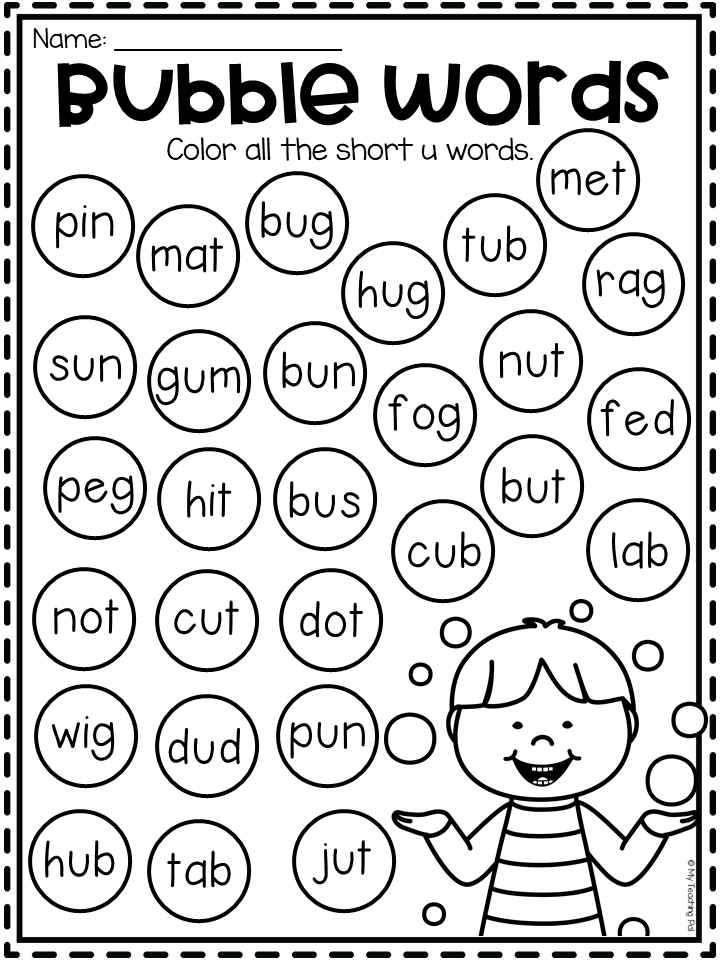
Overview: Meditation for Kids
In some ways it is not surprising that children develop stress disorders early. We live in a sensory world. There are real threats, and the unknown can be scary. Today's children suffer from attention spans and an inability to concentrate while studying, in the classroom, or even at play.
It is tempting to think that you can protect your children from all the fears and stresses throughout their lives; the best answer is to explain how to deal with difficult times. Children's meditation can help them with this.
Establishing a solid meditation practice at an early age is a good intention for your children and for yourself as parents and educators.
Whether it's deep breathing exercises, guided meditations, sleep stories, yoga, or any other mindfulness-based intervention, there's no doubt that children of all ages will benefit from mindfulness training from an early age.
Diagnosis of anxiety and behavioral disorders in children has increased dramatically.
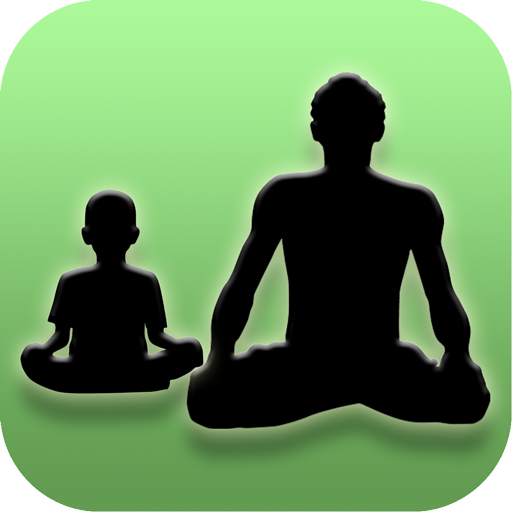
Now let's define what meditation is?
For both children and adults, meditation is a practice that can bring great joy and comfort to your life. Although it can be difficult to define meditation in one sentence, in general it can be said that meditation is a mind-body practice that trains mindfulness and focus.
There are many benefits to meditation. For example, it helps to improve concentration, calm frayed nerves, relieve stress, help with self-comfort, and promote happiness. All these benefits are available to both children and adults.
Can children meditate?
Yes! Although a child's meditation will not look the same as an adult's meditation, the basic foundations of the practice remain. Children, for example, may benefit from guided imagery. Their duration may be shorter. And, of course, it is very important to choose meditation for the child. Some, for example, do not tolerate sitting meditation for more than a few minutes very well.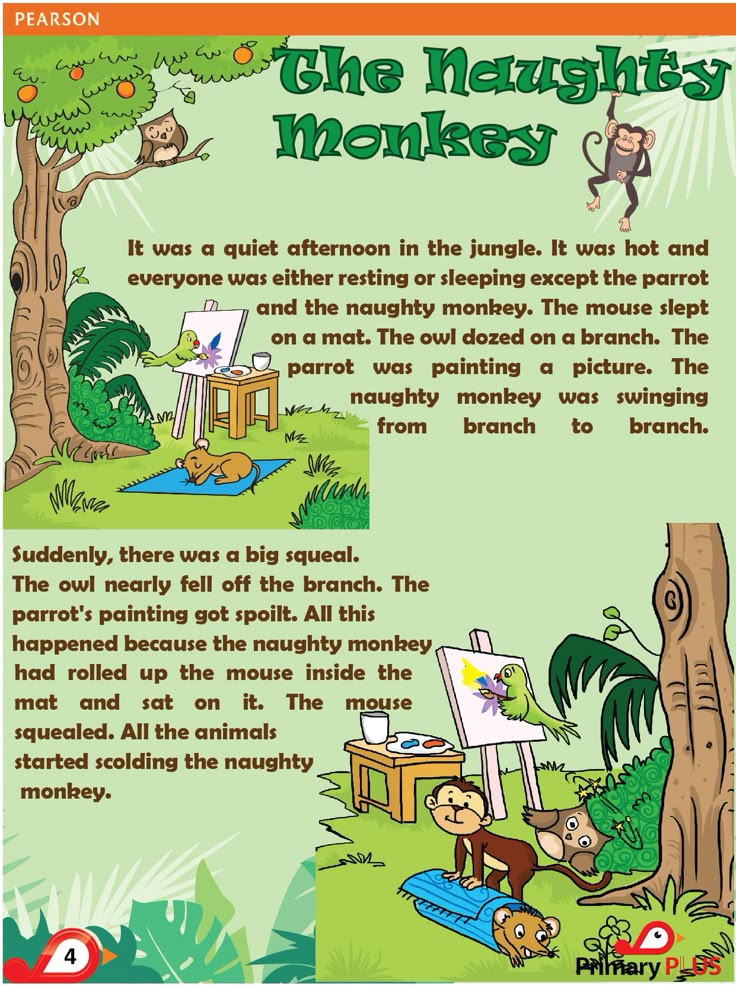 However, they are fine with meditating while walking outdoors, mental painting, telling sleep stories in a soothing voice, or even listening to audio recordings as guided meditations.
However, they are fine with meditating while walking outdoors, mental painting, telling sleep stories in a soothing voice, or even listening to audio recordings as guided meditations.
Mantra meditation can spark curiosity in older children as it requires
extra attention and patience, but can be a great option if your children are willing to dive deeper into
Why is meditation important for children?
Up to 30% of young people develop anxiety disorders.
- American Academy of Pediatrics
Children are not immune from the stresses of life. In recent years, the number of diagnosed anxiety and behavioral disorders in children has increased dramatically. These include attention deficit disorder (ADD), attention deficit/hyperactivity disorder (ADHD), and obsessive-compulsive disorder. First, it tells us a few things as our understanding of how conduct disorders manifest in children grows. Second, rates of diagnosis are rising as children are tested and diagnosed with these disorders.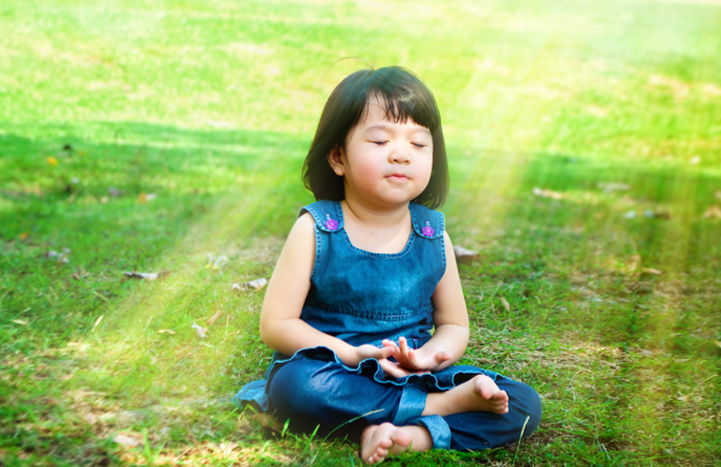 In other words, today's children are not necessarily more stressed than children of the past. However, it also tells us that children are more prone to anxiety and stress than we previously thought. As parents, we must be vigilant and help our children cope with stressful situations in life and instill self-care in their lives from an early age.
In other words, today's children are not necessarily more stressed than children of the past. However, it also tells us that children are more prone to anxiety and stress than we previously thought. As parents, we must be vigilant and help our children cope with stressful situations in life and instill self-care in their lives from an early age.
Can meditation help children cope with stress?
Yes. Fortunately, meditation can help calm the symptoms associated with problematic disorders. Children's meditations have the same effects as adults' practice. Even short, simple meditations for beginners can have amazing benefits. A recent study in the Journal of Positive Psychology found that just 15 minutes of meditation has the same positive impact as a full day of vacation.
Meditations for children
-
Guided Meditation for Children: Live or recorded guided meditation during which the instructor gives instructions for the meditation session.

-
Sleep Meditation: These meditations are gentler and more soothing. Often, meditations are accompanied by music, they calm the mind and prepare the body for sleep.
-
Mindfulness Meditation: Meditation and mindfulness just go together. Mindfulness meditation means awareness (full attention) to the present moment instead of focusing on the past or the future.
Benefits of meditation for children
Children can learn through meditation:
1. How to breathe correctly.
Many people learn to breathe incorrectly (shallow) in childhood. Meditation can help develop proper breathing skills. Deep breathing helps focus and relax, which teens, children, and even young adults may not be aware of and express in their own way.
2. How to deal with stress and anxiety.
Meditation helps to re-adjust the mind and calm the hectic thoughts and harsh, stressful emotions.
3.
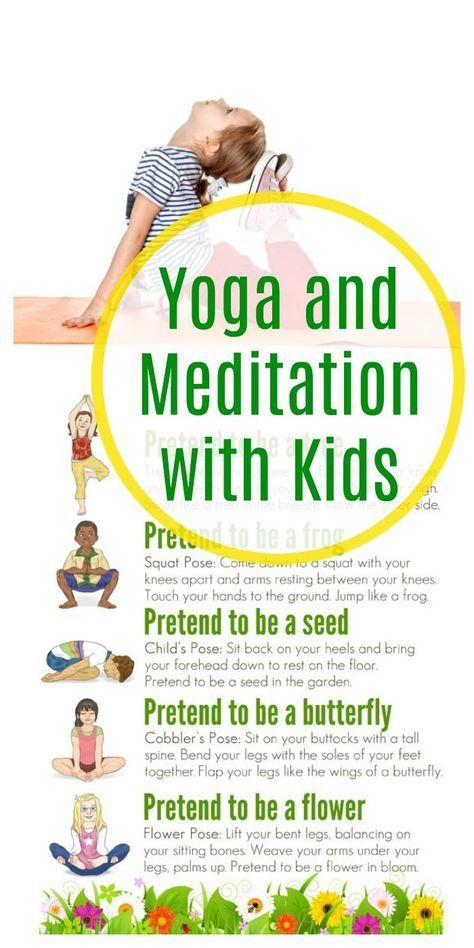 Better focus.
Better focus. Mindfulness meditation, in particular, can be helpful in improving concentration. This is because staying in the present requires significant attention and awareness.
4. How to calm down and regulate difficult emotions.
Children often experience strong emotions and do not know how to calm down. Meditation helps center the mind and provides a soothing cushion for difficult emotions. If your child loves music, consider downloading a meditation that includes children's music. The audio recording can be turned on before bedtime or in the morning when the child is getting ready to start their day.
5. How to sleep better.
If you want to use bedtime meditation for kids, this is a great idea. Children's bedtime meditation can help alleviate some of the problems they face while resting. Many children feel too anxious, scared, or energetic to properly prepare for bed at night. Meditation before bed is a great remedy for a wandering mind.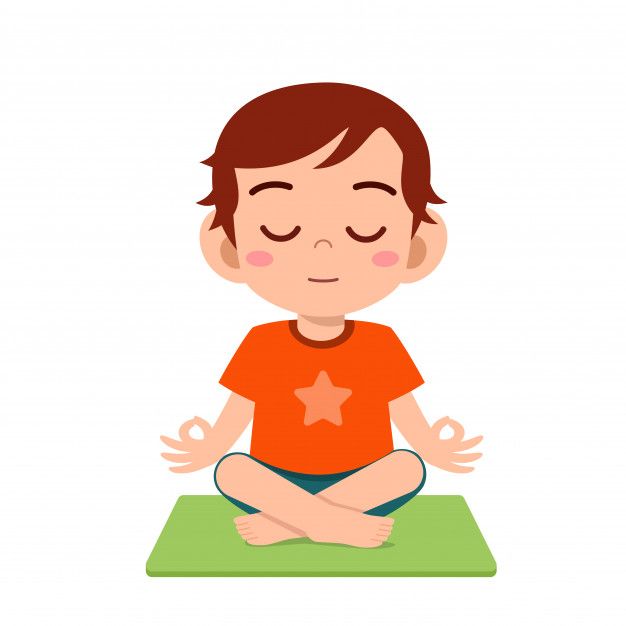
Teaching children guided meditation is easier than you think
There is no wrong way to teach a child to meditate. But here are some tips:
1. Start small. Even five or ten minutes of meditation is better than no meditation at all. Before the start of the school day, sit in a quiet place (perhaps even in the car when you drive the children to school) and dedicate time to meditation practice.
2. Try family meditation. Meditation can be a wonderful experience for all family members, including children. This is a great way to bond with your child and build more trust and intimacy.
If you have never meditated before, ask an instructor for a quick start session.
3. Don't worry about the details. It is natural for someone to giggle, move, or be distracted and restless in body and mind. This practice is primarily aimed at manifesting itself. They may also fall asleep.
Meditation for Children: Frequently Asked Questions
At what age should you start meditating?
You can start mindfulness meditation or short, informal meditation sessions with your children at any time. As a general rule, seated meditations are best for children six years of age and older.
As a general rule, seated meditations are best for children six years of age and older.
How do you meditate as a family?
Here is a quick family meditation: Find a quiet place. Sit on the floor and assume a comfortable, mindful posture. Straighten your back and close your eyes slightly. Set a timer for two to five minutes. Focus on taking a deep breath: Inhale... and exhale... Inhale... and exhale... Inhale... and exhale... until the timer runs out. Breathing exercises are the best way to introduce children to meditation - they give them the opportunity to focus and concentrate.
Does meditation help in studies?
Yes. Meditation has been proven to help children focus better and be less distracted. It helps to improve attention during classes and while studying. Meditation can also improve memory and provide mental and physical support to children as they learn. You can even teach your kids to meditate during their lunch break or before exams and tests at school.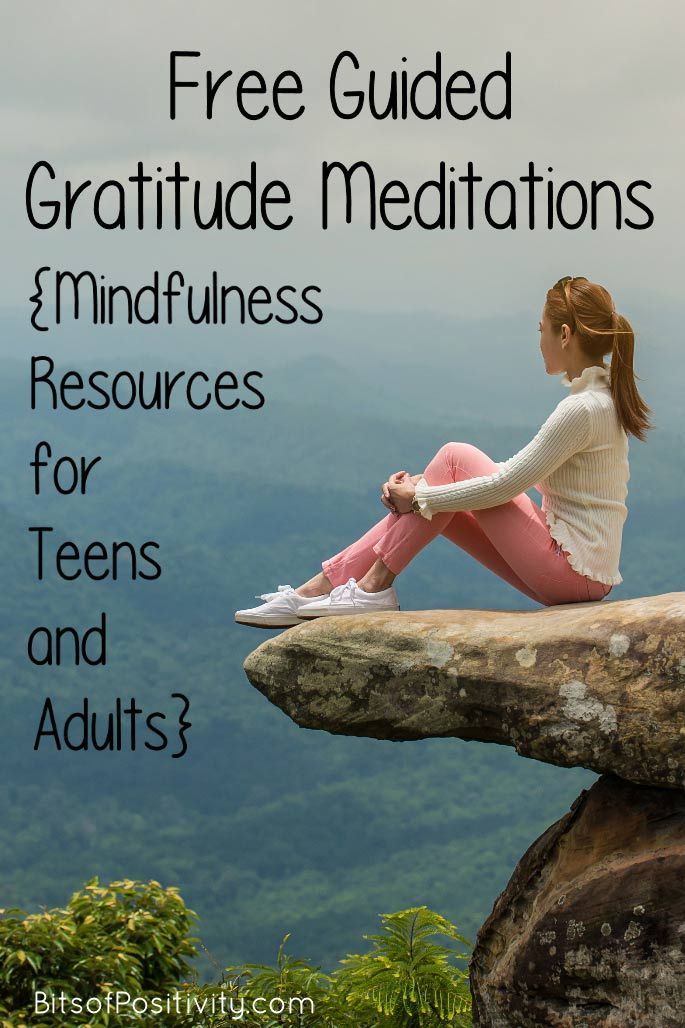
Can babies meditate?
While you probably won't be able to get your little one to sit up during a full meditation, you can work on focus together. Try focusing on one object (like a ball) for 30 seconds. Look at it with your child and describe everything about it (color, shape, size, texture, smell...). This is a great mindfulness meditation for toddlers.
What tools, applications and other methods can be useful for children?
Meditation is not the only holy grail for helping children deal with the stresses of the world - there are a whole range of ways to become more mindful and relax. Yoga, painting, singing, pottery, and being in nature (such as forest bathing or swimming) are fantastic tools to support child development.
For apps, check out meditation apps like Headspace, which offers a library of mind-guided programs and meditations with fun illustrations that young children might find interesting.
Resources for Anaachan Meditation
Meditation Vika
Meditation for chakras
Meditation techniques
Meditation of Body scan
Management Meditation for children
Meditation
Up to 30% of young people will suffer from anxiety disorders
Anxiety and depression in children: Find out the facts | CDC
The impact of 15 minutes of meditation compared to one day of vacation
Meditation for children
Hello my dear readers!
Many times I have received letters with questions about meditation for children.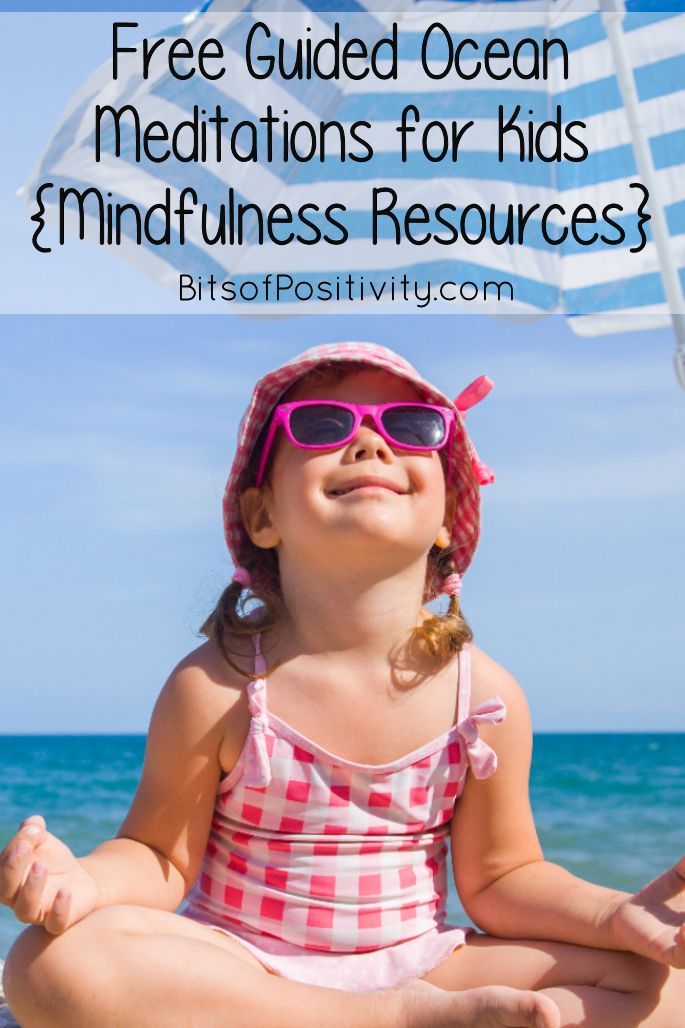 Is it good for children to meditate? How does meditation affect the behavior and well-being of a child? Does meditation harm the child's psyche? What types of meditation are recommended for children. And much more.
Is it good for children to meditate? How does meditation affect the behavior and well-being of a child? Does meditation harm the child's psyche? What types of meditation are recommended for children. And much more.
Today I am ready to answer your questions based on research and my personal experience.
Results of research on the benefits of meditation for children
In a study conducted in five secondary schools in Belgium, with about 400 students (13-20 years old), Professor Philip Raes concluded that students who regularly attended meditation classes mindfulness, already after six months showed a lower level of susceptibility to depression, anxiety and stress.
Shonet Reichl and Lawler conducted a study on the effectiveness of mindfulness meditation for schoolchildren, in which participants meditated three times a day. Overall, there was a significant improvement in positivity and a decrease in the level of aggression in children.
34 adolescents diagnosed with learning disabilities participated in a 5-week mindfulness meditation program.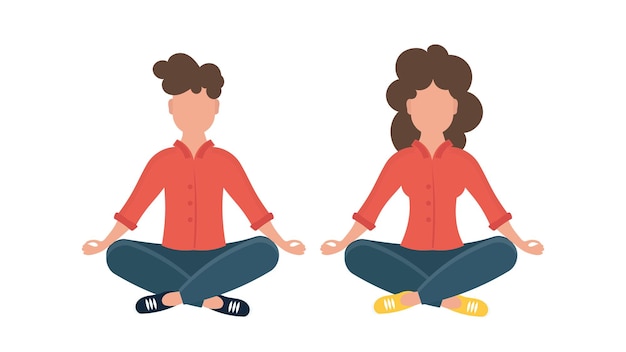 As a result, participants who completed the program showed a significant reduction in anxiety, improved communication skills, and academic achievement.
As a result, participants who completed the program showed a significant reduction in anxiety, improved communication skills, and academic achievement.
Benefits of meditation for children
In general, meditation for children brings the same benefits for young practitioners as for adults:
- Has a positive effect on academic performance;
- Helps kids stay focused in the present moment longer;
- Improves concentration and memory;
- Promotes relaxation, finding inner peace and tranquility;
- Develops such feelings as happiness, joy, love, compassion;
- Reduces anxiety, worry, stress;
- Helps to get rid of aggression and anger or reduce their level;
- Promotes self-acceptance and self-control;
- Increases self-confidence and self-esteem.
You can read about the benefits of meditation for adults here.
Types of meditation suitable for children
Different types of meditation are suitable for children of different age groups. This is due to the peculiarities of the age development of the child. I suggest you try the following meditation techniques, taken from the book Meditation for Children by Lama Tencha. The full content of the book can be found at http://abhidharma.ru/A/Raznoe/0018.pdf.
This is due to the peculiarities of the age development of the child. I suggest you try the following meditation techniques, taken from the book Meditation for Children by Lama Tencha. The full content of the book can be found at http://abhidharma.ru/A/Raznoe/0018.pdf.
Children aged 4 to 7
Meditation sessions for this group are very short. No more than 5-7 minutes. At this age, sensory perception and learning through direct new experience predominates in children. Analytical meditations that include logical reasoning are not suitable for them.
Conscious breathing
Take a comfortable seated posture. Let your mind turn inward. Focus on your own breathing. Breathe softly and naturally.
Do you know where your belly is? Put your hand on your stomach. Like this. The teacher puts his hand on his stomach, showing the children how to do it. Feel your belly rise and fall under your arm as you inhale and exhale. Breathe in and feel your belly getting bigger. Exhale and feel your belly getting smaller.
Sit still and relaxed, with your mind turned deep inward, just feeling your belly expand with each inhalation and decrease with each exhalation. We will sit like this for 2 minutes, inhaling and exhaling.
Now open your eyes and stretch a little. Gently stretch your fingers and toes. Sit still for a while, look around you and listen to the sounds of the world around you.
Awakening of the Heart
Start with quiet and even breathing. Do you feel the rhythm of your breath, feel the air entering and leaving your body?
Imagine that there are members of your family, your friends around you. All of them are here now. Take a breath and exhale. With each exhalation, send light and joy to everyone around you. Now imagine that you are surrounded by more and more people and animals, from the largest to the smallest. Inhale and exhale. With each exhalation, send light and joy to everyone around you.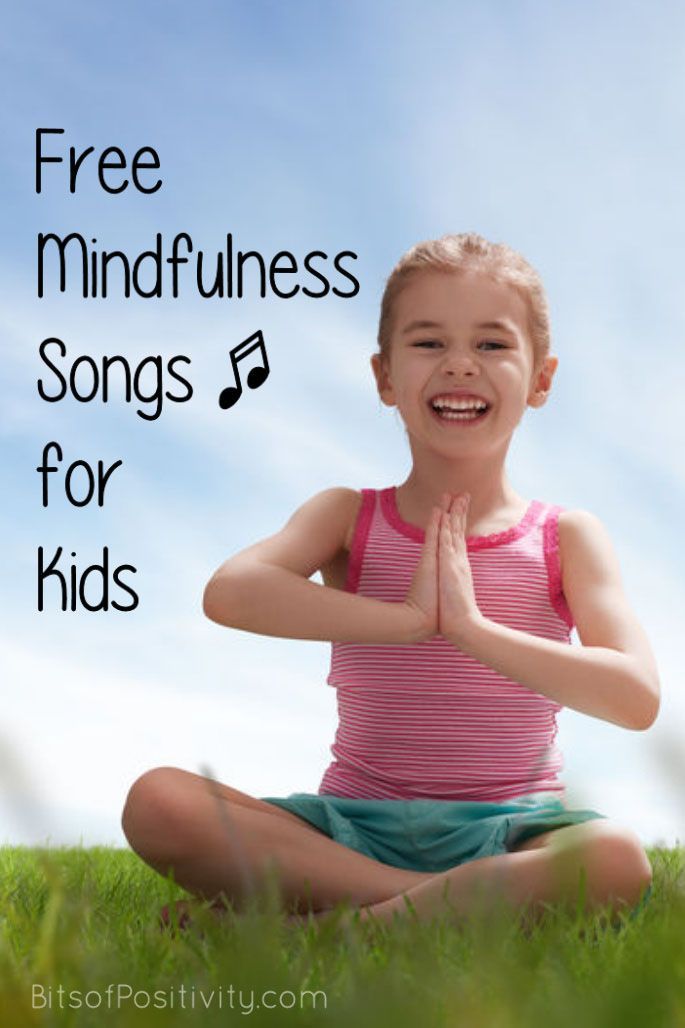 They all become happy, smile, feel a surge of strength and calmness.
They all become happy, smile, feel a surge of strength and calmness.
Feel your heart become big and warm, loving and open.
Children from 8 to 12 years old
At this age, children already use logical thinking, but their logic operates on an objective, limited level.
Purity of mind
Imagine that you are lying on top of a mountain and looking straight into the sky, where there is not a single cloud, the sky is clear and clear. Wherever you look, there will be this clear and clear sky everywhere. Concentrate on this huge empty space.
Imagine that this vast expanse of clear sky is penetrating you and everything around you. Your body and everything that surrounds you dissolves into this space of emptiness. There is nothing but a clear, empty space like the sky. Keep your mind calm and clear. Feel that your mind is clear and shining like a clear mind, open to that space. Your mind is clear and empty like the sky.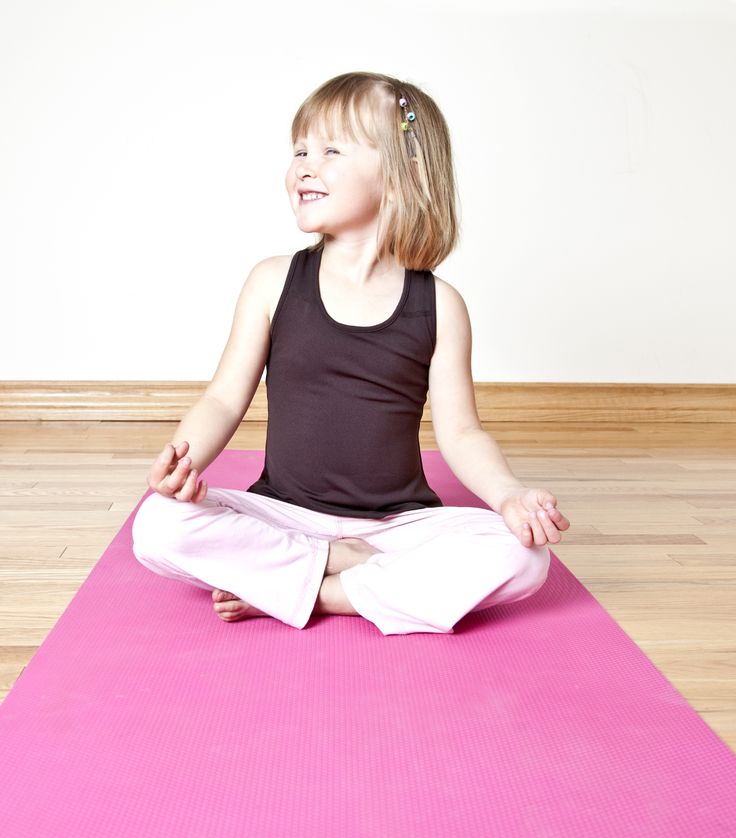 Stay in this feeling for as long as you can.
Stay in this feeling for as long as you can.
Gently stretch your toes and fingers. Keeping a sense of the vast expanse of the sky, feel your body as part of everything that surrounds you. You are calm and happy. There is clarity in your mind.
Mindful walking
First, let's stand still, without moving. Try to keep your hands together, like this. Join hands at the level of the navel. Close your eyes. Relax your body, breathe calmly. Inhale and exhale freely and easily, let your body truly relax and feel comfortable. With each exhalation, feel yourself becoming freer and more relaxed.
Check how you feel at the moment. If there is a sensation in you that you do not like, allow it to become soft and fluid and leave your body. As soon as this happens, feel your body immediately relax. As you continue to stand still, feel your feet touch the floor. Feel your toes, the skin of your soles, and other parts of your feet that are in contact with the floor.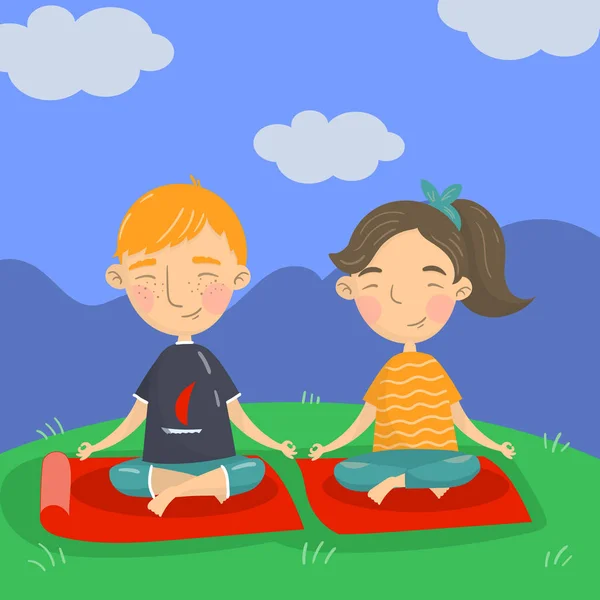
We begin to move slowly together, taking careful soft steps. Raise one leg first and, moving forward, slowly and carefully lower it. Then lift the other leg, and, moving forward, also slowly and carefully lower it. Watch how the sensations in your feet change with each movement. Notice the change in sensations in different parts of the foot as they touch the floor.
If you start thinking about anything else, just notice the thoughts come up and still go back to your feeling in your feet. Just watch your thoughts from the outside and let them go. So we will walk slowly for several minutes, paying attention to the sensations in the feet.
Children aged 13 to 15
Children of this age are able to successfully handle more complex language and concepts, and can concentrate and sit still for longer periods of time.
Light Meditation
Sit comfortably and breathe naturally. Then, when your mind becomes calm and clear, imagine that you are on the banks of a beautiful river, lake or ocean, over which the bright sun shines.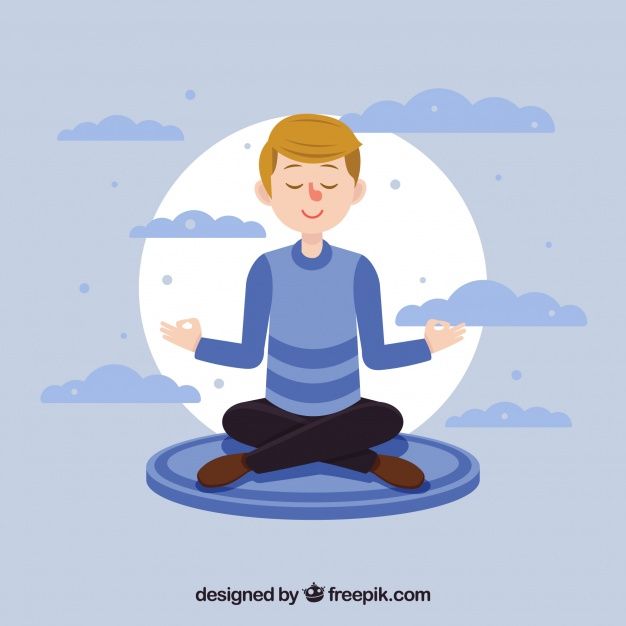 Sunlight, reflected in the waves, sparkles and scatters with many dazzling rays.
Sunlight, reflected in the waves, sparkles and scatters with many dazzling rays.
Think about the fact that this light is all the best, filled with power, it is there that the answers to all the questions that worry you are contained. Light surrounds you from all sides and covers, overflowing your body with great joy, penetrating inside through the tiniest parts of your body. Your body turns into pure white light. Focus on it.
Think that all your problems and difficulties are completely dissolved in this radiant white light, until the last of them disappear, leaving only a white radiance. Your body becomes a body of white light. All your thoughts dissolve into the light of your body. Feel how things really change, that all your suffering disappears completely. Feel yourself getting better.
Keep this feeling of strength for as long as you can.
The division into age groups is rather arbitrary, if you think that your child is ready for the meditation you have chosen, try it with him.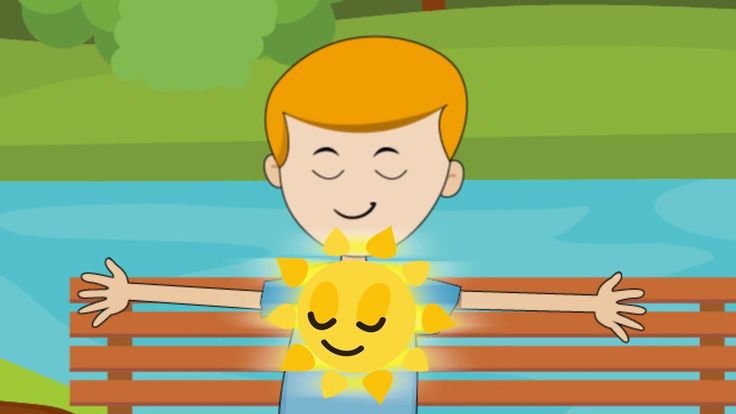 If your child is happy to perform it, then you can again refer to this technique in the future.
If your child is happy to perform it, then you can again refer to this technique in the future.
The most important thing, in my opinion, is to make your child want to meditate, so that meditation is not perceived by him as a tedious duty, but is done with joy and pleasure.
My experience with meditation for children
I teach yoga and meditation for children from 4 to 12 years old, the main age is 6-9 years old. I usually do meditation with the kids at the end of the class. Rather, it is not even meditation as such, but some meditative relaxation. It contributes to the physical and mental relaxation of children, a positive attitude, the development of such feelings as joy and peace.
The children lie down in shavasana, I ask them to close their eyes and focus on their breathing. At the same time, I do not stop the monologue: "take a deep breath, and then exhale slowly, breathe through your nose, evenly and calmly." Then I ask them to relax the body parts by calling them and giving them some time to relax.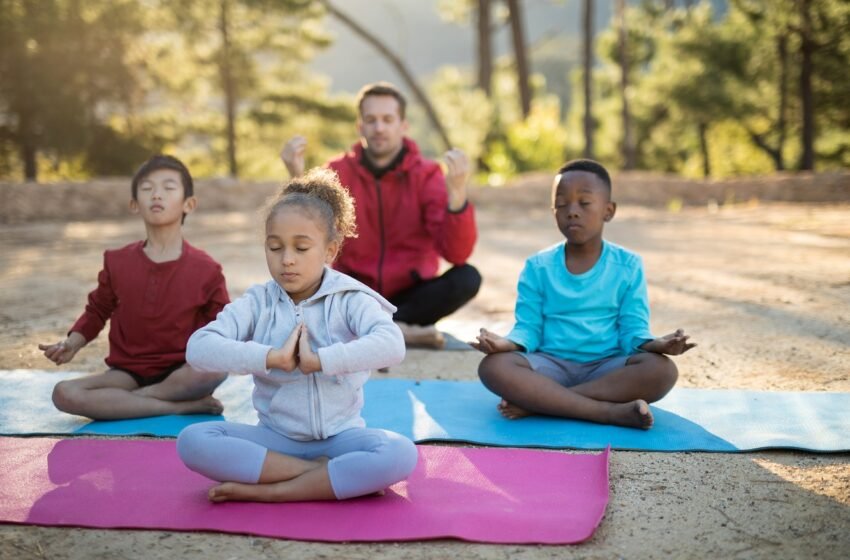
When the children have calmed down, relaxed, breathe evenly and calmly, I invite them to imagine that they are at the sea, in the forest, in a sunny meadow, in a flower field, in their favorite place on earth or soaring in the clouds. Each time it is a different place, but always very pleasant, positive, safe.
Then I ask what they see there, but I encourage them not to answer aloud, but only imagine and observe. And I help them by listing items that hypothetically can be in this place. For example, on the sea, children can see sand, palm trees, waves, a ship, a dolphin, a turtle, etc. Then I ask how they feel and list them again. For example, as warm sand touches their feet, the gentle sun warms the skin, a light breeze blows and the hair flutters. I try to use different senses: sight, smell, touch, hearing, taste.
And then I ask them to feel how love, joy and happiness fill them, how the sun energizes them, they are relaxed and calm. Or, for example, that they can share their secret with an animal they meet in a chosen place. Or that they can return to this place whenever they want, if they feel sad. Every time I try to come up with something new, but always positive and kind.
Or that they can return to this place whenever they want, if they feel sad. Every time I try to come up with something new, but always positive and kind.
In my opinion, meditation for children should first of all teach them to relax, concentrate on their feelings and sensations, and create a state of calm and joy.
We also sing the mantra OM sometimes. To do this, we sit in a circle in the lotus position, close our eyes, sometimes we hold hands. And then I suggest taking a deep breath and chanting OM as you exhale. This is good for developing the lungs and also calms children a little if they are very excited and uncontrollable after some kind of active play.
I also classify the activity of coloring the mandala as meditation. And sometimes I give the kids such a task for literally 15 minutes.
Conclusions
Today, there is more and more information about clinical studies of the positive effects of meditation on the mental and physical health of children.